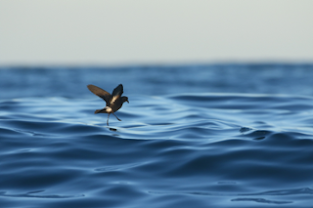
This blog tracks the scientific activity of the Animal Demography and Ecology Unit of the IMEDEA (CSIC-UIB). Contents on animal demography, capture-recapture, APHIS, upcoming workshop, publications

Militäo, T., Sanz-Aguilar, A., Rotger, A. and Ramos, R., 2022 Non-breeding distribution and at-sea activity patterns of the smallest European seabird, the European Storm Petrel (Hydrobates pelagicus). Ibis doi: https://doi.org/10.1111/ibi.13068
Abstract: Determining the non-breeding distribution and activity patterns of migratory animals is essential to understand the trade-offs across breeding, moulting and migratory periods and to evaluate the differential levels of exposure of these animals to threats throughout the year. By taking advantage of the current miniaturization of geolocators, during the breeding season of 2019, we deployed geolocators on 10 European Storm Petrels Hydrobates pelagicus breeding on Benidorm Island, Western Mediterranean, to determine the distribution and activity patterns of this small seabird species. Of the eight individuals that were recaptured with usable geolocation data, all individuals migrated to the North Atlantic Ocean, ranging between the Canary Islands and south of Iceland. They possibly take advantage of the more productive waters in the North Atlantic areas explored during the non-breeding period compared with the Western Mediterranean areas explored during the breeding period.
 |
| Photo from https://birdguide.club/ |
This migratory pattern contrasted with the partial migration described for individuals breeding in the Central Mediterranean. Tracked individuals were more synchronous in their prenuptial than in their postnuptial migratory phenology, probably due to a higher probability of breeding success related to earlier arrival to the breeding area. At-sea activity data indicated that individuals spent more time on the water at night (and especially on those nights around the new moon) during the first half of the non-breeding period (matching the dates of the moulting period of the species). Although birds may begin to moult their feathers while breeding, some seemed to overlap the moulting period with the postnuptial migration. Our results show that multi-colony studies are needed to understand the drivers of distinct migratory patterns at intra- and inter-population levels and how small migratory species trade-off the overlap of moult with other energetically demanding activities such as breeding or migrating.
Photo: V. Paris The EU-project SEAGHOSTS is on the starting blocks. The project, led by the University of Barcelona, joins 16 groups of rese...
